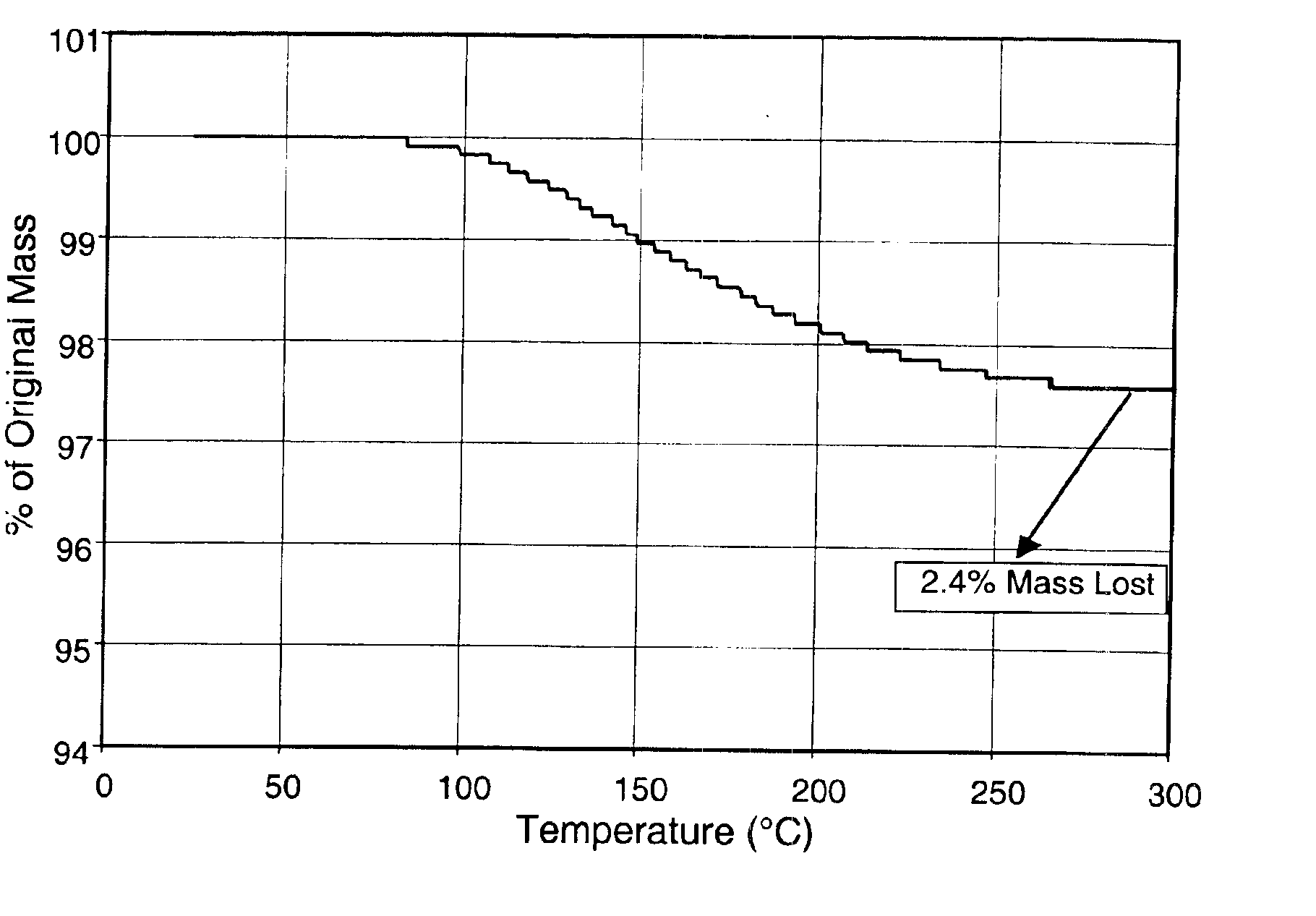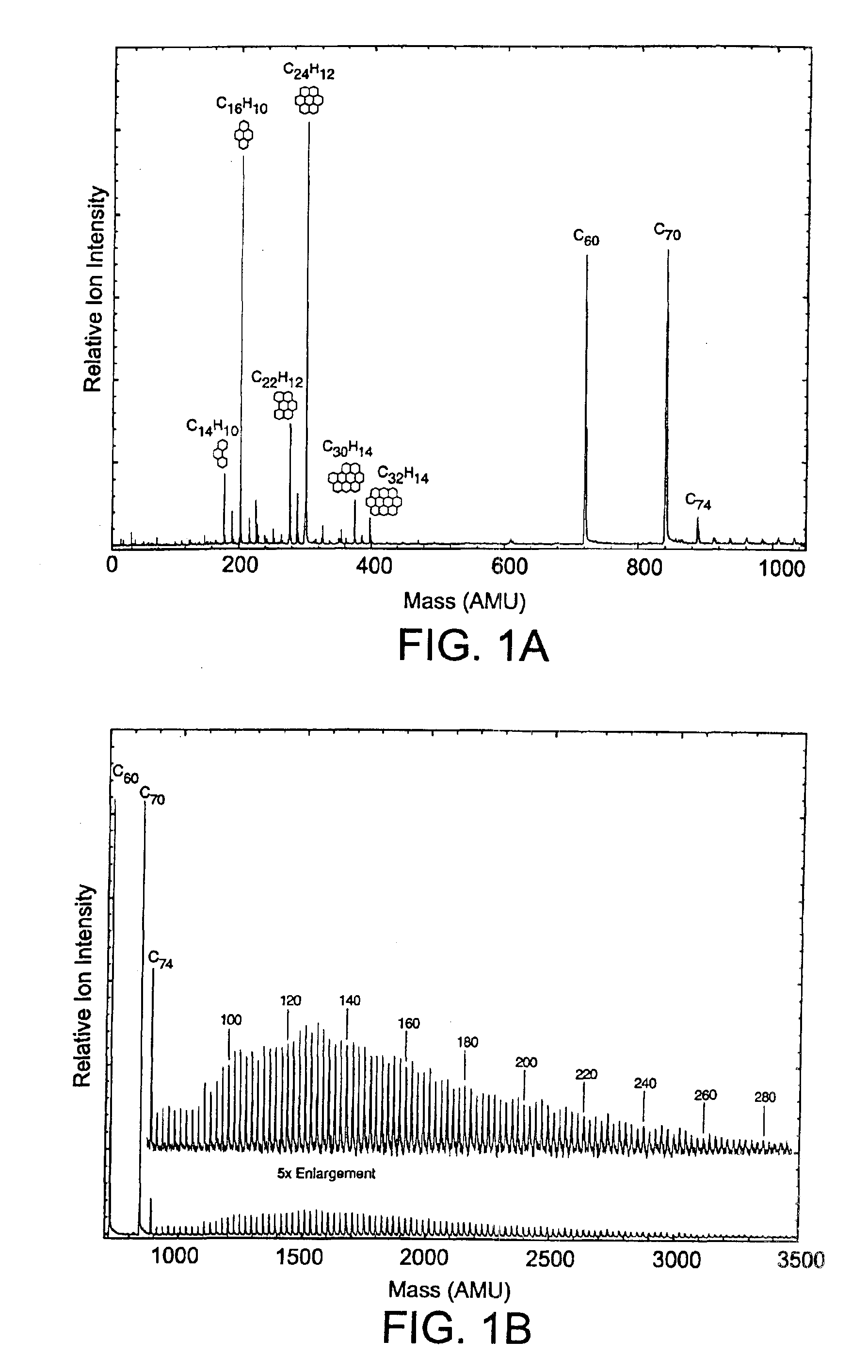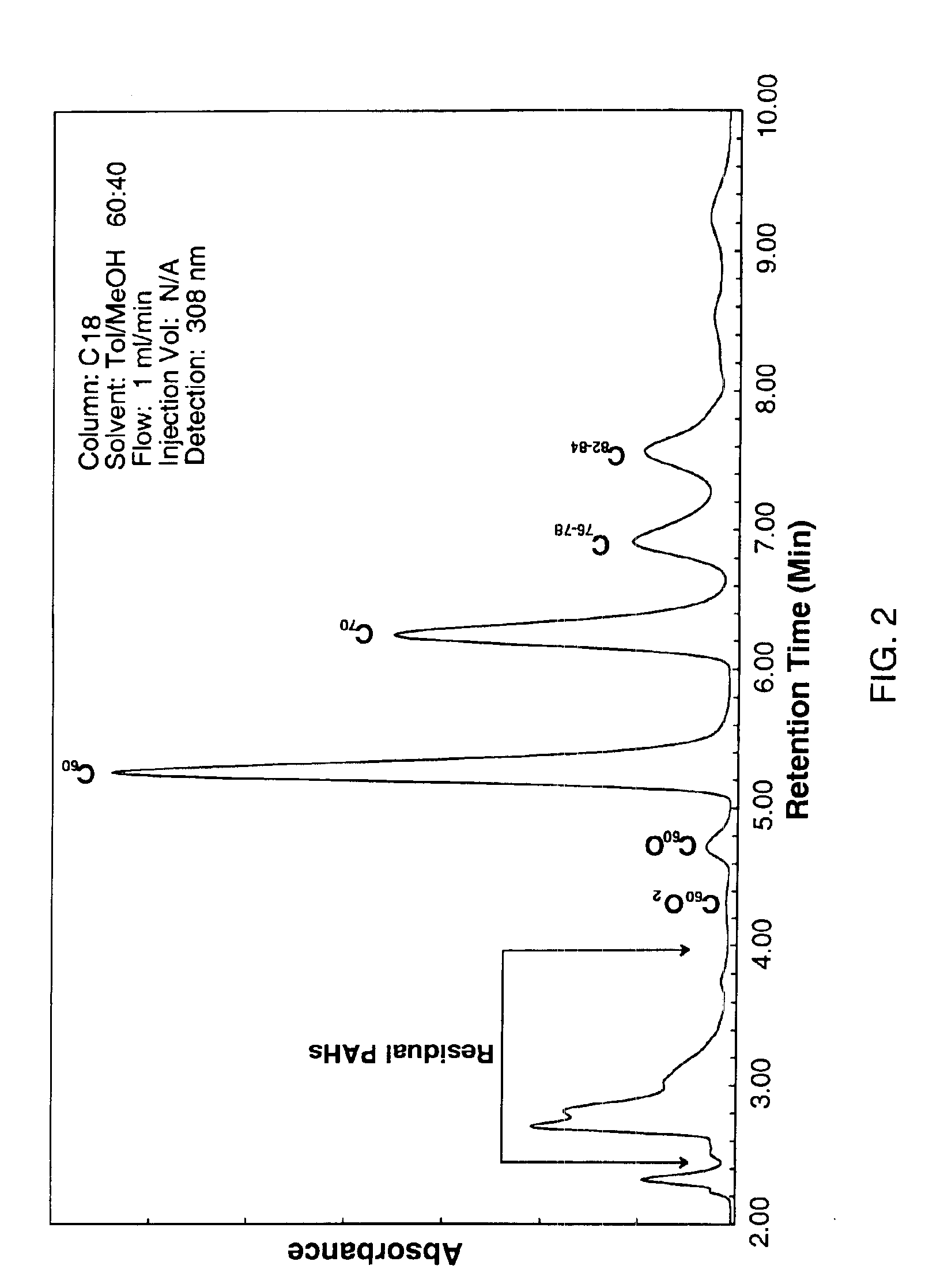Process for the removal of impurities from combustion fullerenes
a combustion fullerene and impurity removal technology, applied in the field of carbon nanomaterial purification, can solve the problems of contaminated with undesirable impurities including various pahs, unsuitable commercial-scale production of fullerenes, and unacceptable marketing and/or liability concerns, so as to reduce the amount of material, and improve the effect of process efficiency
- Summary
- Abstract
- Description
- Claims
- Application Information
AI Technical Summary
Benefits of technology
Problems solved by technology
Method used
Image
Examples
example 1
Analysis of Combustion Soot
[0058]The combustion of fuel and oxygen in a high temperature burner produces a broad range of combustion products. These include unburnt fuel, small hydrocarbons from thermolysis of the fuel, partially oxidized fuel and hydrocarbons, PAHs, partially oxidized PAHs, and carbon nanomaterials, including fullerenes, (and many other species) whose relative amounts can fluctuate widely as the combustion conditions are varied. The most abundant and undesirable class of impurities is the PAHs and their partial oxidation products. FIGS. 1A and 1B show a mass spectral analysis of the fullerenes and PAHs present in combustion soot (where the fuel employed was toluene). The ratio of the two components varies depending on the flame conditions, but typically the PAH to fullerene ratio is about one to twenty as determined by gravimetric and calibrated chromatographic analysis. A high performance liquid chromatographic (HPLC) analysis of PAHs and fullerenes extracted from...
example 2
Purification of Fullerenes from Combustion Soot
[0059]Combustion soot was extracted with o-xylene to remove fullerenes and PAHs from the non-soluble soot. The solution containing the fullerenes was then concentrated to dryness and the fullerene / PAH mixture was transferred to a large Soxhlet extractor where it was extracted with ethanol until no significant further extraction of PAHs into the ethanol in the Soxhlet cup was visually detectible (approximately 150 cycles). The fullerenes were then removed from the extraction thimble and washed once with diethyl ether followed by hexane. The fullerenes were then transferred to a vacuum oven where they were spread uniformly on a shallow tray for drying. The vacuum oven was pumped to an ultimate vacuum less than 10 mtorr. The vacuum oven was slowly heated over 12 hours from room temperature to 300° C. to further remove any remaining solvent, PAHs, and hydrocarbon impurities.
example 3
Analysis of Purification Process
[0060]The effectiveness of the extraction procedure described in Example 2 is illustrated in FIGS. 3A and 3B. FIG. 3A shows an enlargement of the PAH region of the HPLC analysis for typical combustion fullerene extract produced by extracting the raw combustion soot with o-xylene. FIG. 3B shows that the PAHs are effectively removed by the extraction treatment.
PUM
| Property | Measurement | Unit |
|---|---|---|
| temperatures | aaaaa | aaaaa |
| temperatures | aaaaa | aaaaa |
| temperatures | aaaaa | aaaaa |
Abstract
Description
Claims
Application Information
 Login to View More
Login to View More - R&D
- Intellectual Property
- Life Sciences
- Materials
- Tech Scout
- Unparalleled Data Quality
- Higher Quality Content
- 60% Fewer Hallucinations
Browse by: Latest US Patents, China's latest patents, Technical Efficacy Thesaurus, Application Domain, Technology Topic, Popular Technical Reports.
© 2025 PatSnap. All rights reserved.Legal|Privacy policy|Modern Slavery Act Transparency Statement|Sitemap|About US| Contact US: help@patsnap.com



